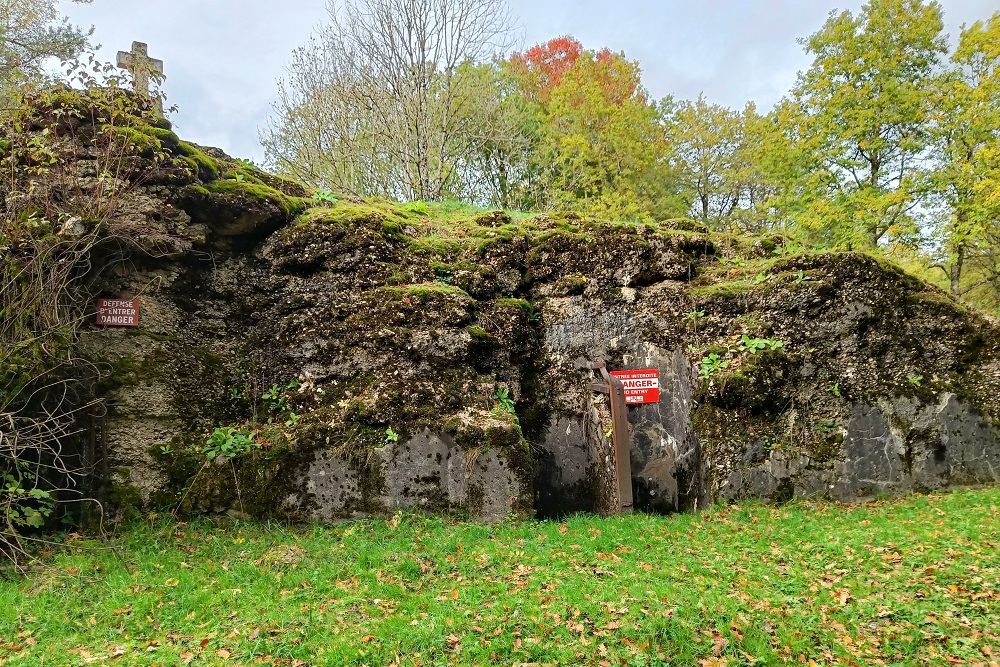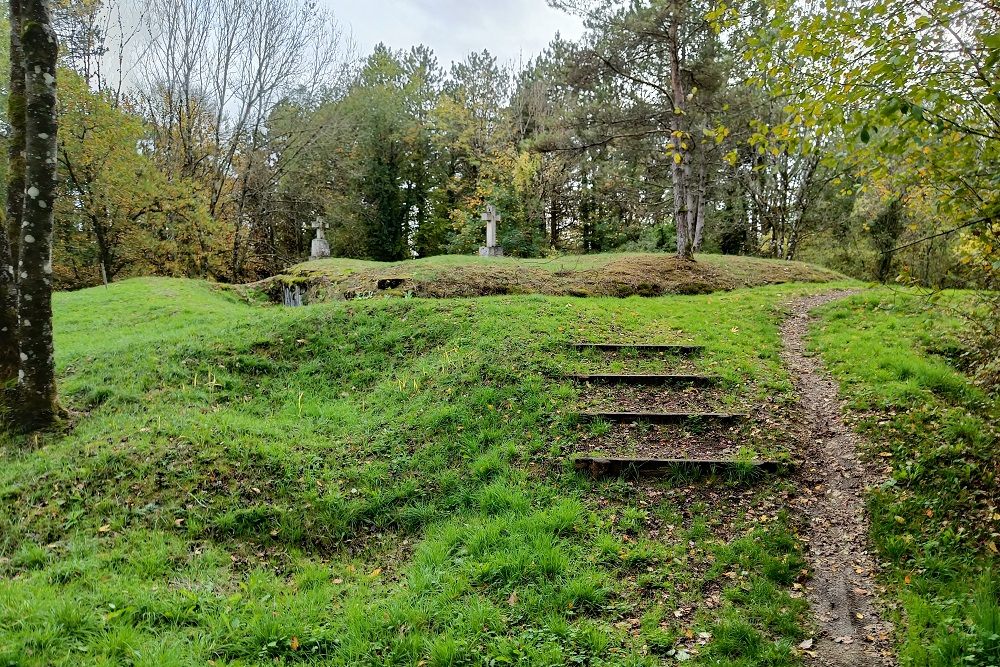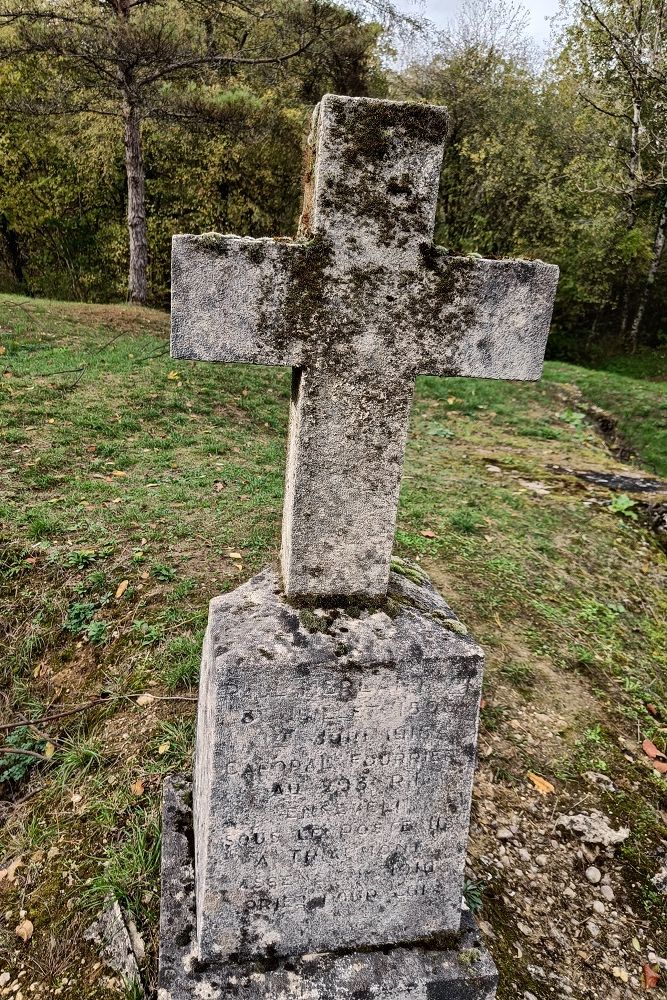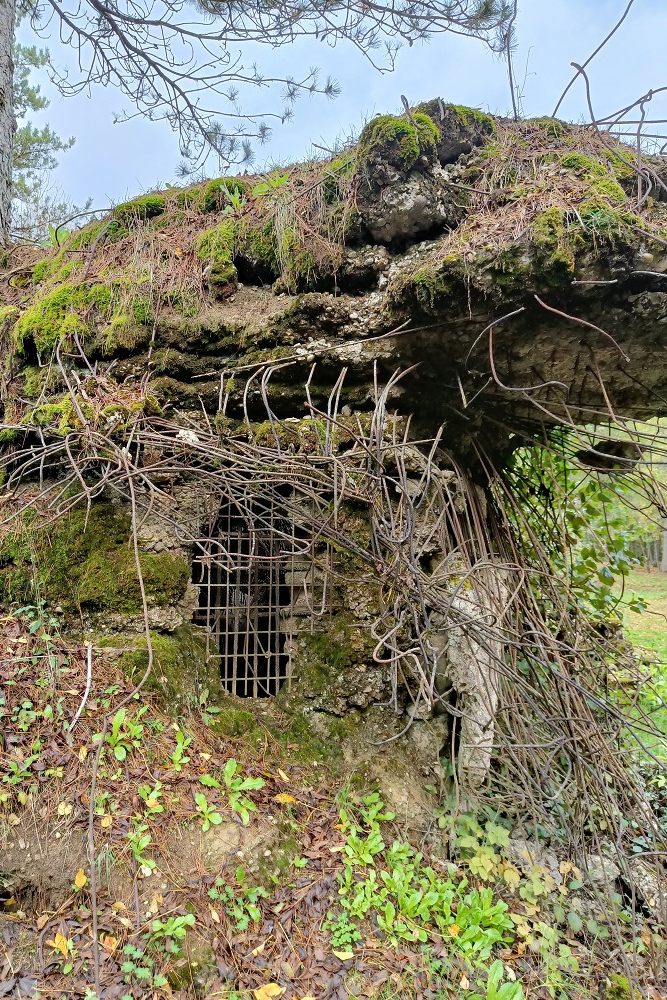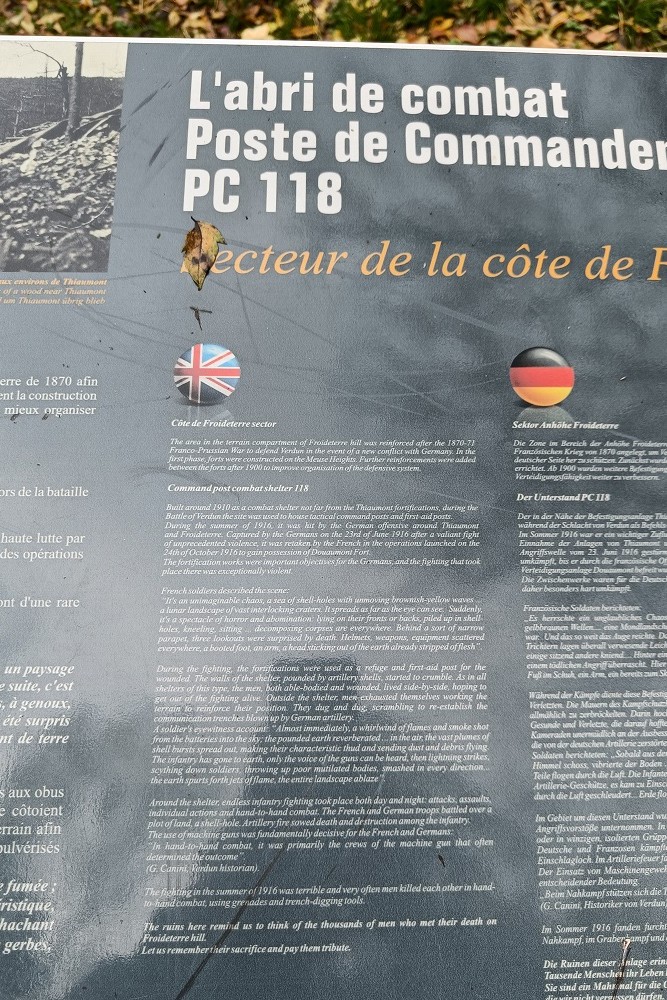PC 118 Froideterre
Cote de Froideterre sector
This part of the Froideterre Hill site was fortified following the Franco-Prussian War of 1870-1871 to defend Verdun in the event of a conflict with Germany. In the first phase, fortresses were built on the high plateau of the Moselle. Further fortifications were made after 1900 to further improve the defense system.
Command post bunker 118
Built around 1910 as a battle bunker, not far from the Thiaumont fortifications, the site was used as a tactical command bunker and first aid station during the Battle of Verdun. In the summer of 1916 it was the center of a German attack around Froideterre and Thiaumont. On June 23, 19, the Germans took the bunker after a heated battle with unprecedented violence. The French retook it on 24 October 1916 to regain access to the Douaumont Fort. Defenses were important targets for the Germans and violence was not shunned to take them.
A French soldier describes the battle:
"It is an unthinkable chaos. A sea of shell impacts with waves of brown-yellow that seem to stand still. It resembles a lunar landscape with continuous craters. These craters can be seen as far as the eye can see. Suddenly a horror and horror spectacle unfolds : lying on their stomachs or backs, piled up in bomb craters, kneeling, sitting ... everywhere you see the decomposing corpses. Behind a kind of narrow parapet, three sentries are surprised by death. Helmets, weapons, tools are everywhere. Also a foot is left in the boot, an arm or a head that seems to stick out of the earth without flesh.
During the fighting, the bunkers are used as a shelter and first aid station for the wounded. The walls of the bunker, under constant bombardment, begin to crumble. As in all bunkers of this type, both the wounded and the unwounded live side by side in the hope of making it out alive. Outside the bunker, men work up a sweat to fortify their positions. They dig and dig, struggling to reconnect the trenches that had been blasted by the German artillery.
A soldier's eyewitness account: "Almost immediately a whirlwind of flame and smoke rises from the cannons into the air. The trembling of the earth reverberates in the air. The plumes of smoke from the shells scatter, with a characteristic thud: dust and debris fly in all directions. The infantry digs in, only the sound of the guns can be heard. Then there is a flash of light that mows down soldiers and sends mutilated bodies flying in all directions. The earth spews fire, the whole landscape seems to be on fire to stand.
Endless infantry attacks are taking place around the bunker: fighting day and night. Attacks, raids, individual actions and hand-to-hand combat. The German and French troops fought over every piece of land, sometimes even a bomb crater. Artillery sows death and destruction among the infantry. The use of machine guns was often the basis for the outcome of the battle for the French and German troops: In hand-to-hand combat, it was usually the machine gun crew that determined the outcome. (G. Canini, historian of Verdun).
The fighting in the summer of 1916 was terrible: the soldiers regularly killed each other in hand-to-hand combat, using both hand grenades and trench shovels.
The ruins here remind us of the thousands of men who died on Froideterre Hill. Let us remember their offering and pay our respects.
Do you have more information about this location? Inform us!
Source
- Text: TracesOfWar
- Photos: Tjerk Kamstra
Nearby
Museum
- Museum Ossuary Douaumont - Douaumont (Verdun)
- Mémorial de Verdun - Fleury-devant-Douaumont
- Douaumont Fortress - Douaumont (Verdun)
Point of interest
- Former Village Fleury - Fleury-devant-Douaumont
- Former Village Douaumont - Douaumont (Verdun)
- Former Village Louvemont - Louvemont
Monument
- Memorial Jewish Soldiers Verdun - Verdun
- Monument 4th Regiment Zouaves And Tiralleurs - Fleury-devant-Douaumont
- Memorial Marshall Jean de Lattre de Tassigny - Douaumont (Verdun)
Cemetery
- Douaumont Ossuary - Douaumont (Verdun)
- French War Cemetery Douaumont - Douaumont (Verdun)
- Grave Colonel Leon Rodier - Fleury-devant-Douaumont
